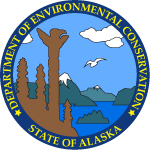| Action Date |
Action |
Description |
DEC Staff |
| 12/30/1987 |
Site Characterization Report Approved |
(Old R:Base Action Code = SI - Site Investigation). A site investigation was conducted by R&M Consultants which included historical air photo interpretation, drilling and sampling 18 soil borings, and geotechnical and analytical analyses. Soils exhibited up to 200 ppm toluene and 5920 ppm TPH. No groundwater wells installed. R&M report completed on 3/1/88. |
Former Staff |
| 2/28/1988 |
Site Added to Database |
|
Former Staff |
| 8/12/1988 |
Cleanup Level(s) Approved |
(Old R:Base Action Code = SI - Site Investigation). A soil gas survey consisting of 21 soil-gas probes and confirmation subsurface soil sampling for Total BTEX and 418.1 TPH were conducted by Woodward Clyde Consultants. Approximately 7,000 cubic yards of soil are estimated to be remediated based on a 100 ppm TPH clean up level. |
Former Staff |
| 2/7/1989 |
Cleanup Plan Approved |
(Old R:Base Action Code = RAPR - Remedial Action Plan Review (CS)). On-site treatment plan submitted by W. Ballard with DOT&PF. Plan consists of land farming aeration in 0.5 foot lifts until below 100 ppm TPH. 7000 cubic yards estimated to be treated. |
Former Staff |
| 5/1/1989 |
Update or Other Action |
(Old R:Base Action Code = F - Site Treatment, Soil/H2O). DOT aerating petroleum contaminated soils on-site. On-site began May 1989. |
Former Staff |
| 5/16/1989 |
Update or Other Action |
(Old R:Base Action Code = FI - Field Inspection (General)). Inspected site. Found site to be "a mess". Aeration taking longer than expected. |
Ron Godden |
| 1/3/1991 |
Site Ranked Using the AHRM |
Initial ranking. |
Former Staff |
| 7/27/1998 |
Update or Other Action |
ADEC letter reviewing March 1997 "Final Report, Fire Training Facility, Phase II Environmental Assessment". ADEC noted detection of contaminants in monitoring well for the first time; requested long-term monitoring. |
Eileen Olson |
| 10/9/1998 |
Update or Other Action |
ADEC letter approving groundwater monitoring plan dated August 1998. |
Eileen Olson |
| 5/9/2000 |
Update or Other Action |
Reranked-checked multiple sources, which was not previously checked. Changed GW Usage from 0.4 to 0.8 and GW Exposure from 0.4 to 1. |
Eileen Olson |
| 7/31/2001 |
Update or Other Action |
Request for NFA received on 7/31/2001. |
Renee Evans |
| 6/29/2004 |
Update or Other Action |
File number changed from CS67.06 to 2100.38.028.26 |
Sarah Cunningham |
| 5/12/2006 |
Conditional Closure Approved |
ADEC has determined that the Fire Training Pits do not pose a risk to human health and the environment and therefore, will be conditionally closed. However, there are areas of contaminated soil that exceed Department cleanup levels. |
Todd Blessing |
| 5/12/2006 |
Institutional Control Record Established |
Groundwater should continue to be monitored in accordance with a plan approved by ADEC. Any proposal to excavate or transport soil from this facility requires ADEC approval in accordance with 18 AAC 78.274(b). |
Todd Blessing |
| 5/18/2006 |
Update or Other Action |
Requested that ANC submit a brief long term groundwater monitoring work plan to the Department by December 30, 2006. The work plan should define the means and methods to annually sample groundwater from three monitor wells for GRO, DRO, and BTEX. One monitor well should be located near the fire training pit. A second monitor well should be located near the oil water separator and a third monitor well should be located hydrologically downgradient of the other two monitor wells adjacent to the drainage ditch which collects the effluent from the fire training facility. |
Todd Blessing |
| 1/31/2007 |
Update or Other Action |
Standard Operating Procedure and Quality Assurance Project Plan were reviewed. Groundwater samples will be collected from on-site monitor wells and surface water samples will be collected from effluent discharge prior to discharge to drainage ditch Groundwater samples will be analyzed for GRO, DRO, and BTEX. Surface water samples will be analyzed for GRO, DRO, BTEX, MBAS, and 5 day biochemical oxygen demand. An email was submitted to ANC approving of the plan. |
Todd Blessing |
| 9/10/2007 |
Update or Other Action |
DEC reviewed the spring 2007 sampling report. Water samples were collected from a holding pond located next to the oil/water seperator. Groundwater samples were collected from the 3 on-site groundwater wells. DRO, GRO and BTEX were not detected in groundwater samples. DRO ranged from 15.1 to 15.7 mg/L, while GRO ranged from nondetect to 61.4 mg/L in the water samples. In addition, methylene blue activating substances were detected at a level of 1.9 mg/L and biological oxygen demand was detected at a level of 10.4 and 23 mg/L. |
Todd Blessing |
| 2/26/2009 |
Update or Other Action |
DEC staff reviewed Restoration Science and Engineering's (RSE's) "ANC Groundwater and Surface Water Monitoring of Fire Training Facility - Spring and Fall 2008", dated December 15, 2008. This report documented the sampling of groundwater and surface water in the spring and fall of 2008. Collected samples were analyzed for DRO, GRO, BTEX, methyelene blue activating substances (MBAS) foaming agents, and biological oxygen demand (BOD). No contaminants of concern were detected above DEC's cleanup values established in 18 AAC 75.345. The levels of MBAS foaming agents and BOD detected in surface water samples suggested that the water is not pristine but conforms to DEC water quality criteria. |
Todd Blessing |
| 1/13/2010 |
Update or Other Action |
DEC staff evaluated Mactec's "ANC Groundwater and Surface Water Monitoring of Fire Pit Training Facility Fall, 2009" dated Novemeber 24, 2009. Mactec collected groundwater samples from three on-site monitoring wells and a surface water sample from the dicharge area. No contaminants of concern were detected above 18 AAC 75.345 Table C levels in groundwater samples; however, DRO was detected in a surface water sample collected from water discharged from the oil/water separator. DRO was detected at a value of 10.7 and 11.7 mg/L. |
Todd Blessing |
| 5/18/2010 |
Update or Other Action |
DEC was informed that the FBI has been making improvements to the firing range which is just west of the fire training pits. The FBI's contractor (TRS) generated potential hazardous waste by excavating lead contamianted soil. Currently, the suspect soil is placed on a liner and will be tested for lead and petroleum constituents. |
Todd Blessing |
| 6/16/2011 |
Document, Report, or Work plan Review - other |
DEC staff reviewed Mactec's "ANC Groundwater Monitoring of Fire Pit Training Facility, Fall 2010", dated February 18, 2011. Groundwater samples were collected from monitoring wells MW-1, MW-2, and MW-3 and analyzed for DRO, GRO, and BTEX. No contaminants of concern were detected above 18 AAC 75.345 Table C values. |
Todd Blessing |
| 6/30/2011 |
Update or Other Action |
Transferred Project Manager from Todd Blessing to IC Unit |
Bianca Reece |
| 8/29/2011 |
Document, Report, or Work plan Review - other |
Reviewed a work plan prepared by EMI and received at our office on August 18, 2011. The plan defines the means to characterize soil stockpile generated during the construction of the new firing range building at Anchorage International Airport. Soil samples will be collected from three on-site stockpiles (roughly 435 total cubic yards of soil) and characterized for petroleum contamination and Resource Conservation and Recovery Act (RCRA) metals, and TCLP lead. It is believed that the soil is currently stockpiled at ANC’s fire training pit site. The work plan is approved, provided we get 24 hours notice prior to the sampling event so we can inspect sampling activities. |
Todd Blessing |
| 6/18/2012 |
Institutional Control Update |
Reviewed the Spring 2011 groundwater monitoring results and all samples were non-detect for GRO, DRO, and BTEX. Future groundwater monitoring requirements are removed. A surface water sample was taken before the fire pit was drained in spring 2011 and the sample contained DRO above Table C values. Additional details about this issue have been requested of the responsible party and IC removal will be considered after the surface water details have been clarified and the well decommissioning documentation has been received. |
Evonne Reese |
| 6/26/2012 |
Update or Other Action |
Received a response from the RP regarding groundwater monitoring well decommissioning and clarification on the surface water issue which is covered under an ADEC wastewater permit. The RP has put in a request for having the wells properly decommissionined. Updated the reminder system to follow up with the RP in six months time.
|
Evonne Reese |
| 1/20/2013 |
Document, Report, or Work plan Review - other |
DEC staff reviewed EMI's "ANC Groundwater Monitoring Fire Pit Training Area - Summer, 2012". All wells were non-detect for GRO, DRO, and BTEX. Surface water sampling events were conducted, which is covered under an ADEC wastewater permit. We expect to receive the groundwater well decommissioning documentation by Summer 2013. |
Kristin Thompson |
| 2/4/2013 |
Institutional Control Update |
Contacted the RP regarding groundwater well decommissioning status. The decommissioning is scheduled for spring and we will be send documentation at that time. I have updated the reminder system with this info. |
Evonne Reese |
| 6/27/2013 |
Institutional Control Update |
Received the Monitoring Well Decommissioning Report. All wells were decommissioned according to the November 2011 ADEC Monitoring Well Guidance. |
Evonne Reese |
| 6/27/2013 |
Institutional Control Record Removed |
The conditions at this site meet the 2009 closure policy and the groundwater monitoring wells have been decommissioned, therefore ICs can be removed. The default requirement of no offsite transport of soil or groundwater will still apply. ADOT&PF environmental staff were informed of this action. In accordance with 18 AAC 75.380(d)(2), ADEC may require additional site assessment, monitoring, remediation, and/or other necessary actions at this facility should new information become available that indicates contamination at this site may pose a threat to human health or the environment.
|
Evonne Reese |
| 9/14/2016 |
Update or Other Action |
During an investigation of sites affected by an upcoming regulations revision that include the addition of fire retardant PFCs (PFOS/PFOA) to the cleanup levels. A request was sent to the AIA asking for a PFC investigation of the area-wide airport. The reminder system has been updated to check on the work status after the first of the year. |
Evonne Reese |
| 11/22/2016 |
Document, Report, or Work plan Review - other |
A monitoring well (MW-04) was installed on September 8, 2016 that will be used for future sampling for perfluorinated compounds (PFCs). A report for this installation was received on this date. |
Evonne Reese |
| 12/6/2016 |
Document, Report, or Work plan Review - other |
Laboratory results were received for groundwater sampling from the newly installed well. Initial results for PFOA and PFOS were either non-detect or below cleanup levels in the groundwater. A brief report will follow which includes site history and sampling details. |
Evonne Reese |
| 1/26/2018 |
Update or Other Action |
Received reports for both the fall 2016 and also the fall 2017 groundwater sampling reports. The purpose of these events was to sample for polyfluornated compounds (PFOS) which have been identified by the EPA as an emerging contaminant. The 2016 report confirmed the information included in the 12/6/2016 action entry that states the samples were either non-detect or below cleanup levels for PFOS. The fall 2017 sampling showed that concentrations of PFOS in the groundwater were below the Table C cleanup levels. |
Evonne Reese |
| 1/9/2019 |
Update or Other Action |
Received revised analytical report for 2017 PFAS sampling. The report was revised to include all compounds on the laboratory reporting list which contained six targeted compounds in the USEPA's third Unregulated Contaminant Monitoring Rule (UCMR3) under the Safe Drinking Water Act (PFOS, PFOA, PFNA, PFHxS, PFHpA, and PFBS). PFOS, PFHpA, and PFBS were detected at 0.00592, 0.0192, and 0.191 ug/l respectively. The other three UCMR3 compounds were not detected. These results were below current action levels for PFAS. |
Wendy Hansen |
| 2/1/2020 |
Update or Other Action |
The DEC received a summary of sampling efforts conducted by the airport environmental staff for PFAS sampling. Included in the report were sample results for water that had accumulated in the fire training pit. Results for PFAS were as follows: PFOA 5,600 ppt; PFOS 268,000 ppt; PFHpA 44,700 ppt; PFHxS 37,800 ppt; PFNA 5,290 ppt. |
Robert Burgess |
| 2/25/2022 |
Update or Other Action |
This site was originally opened to address petroleum related compounds from fire training activities. Since its closure in 2006 and removal of institutional controls in 2013, PFAS contamination has become a concern. For complete information of PFAS at the Anchorage International Airport, please cross-reference with the AIA Anchorage Airport Sitewide PFAS contaminated site; file number 2100.38.028.38 |
Robert Burgess |
| 4/12/2022 |
Site Reopened |
New information indicates that the site may present an unacceptable risk due to the presence of PFAS contamination, so the site status is changed to Active.
|
Evonne Reese |
| 9/2/2022 |
Site Visit |
DEC staff visited the site with Airport Environmental staff and environmental consultants to walk the site and identify sampling locations and access points for site characterization under DEC's direction and oversight. |
Robert Burgess |
| 11/4/2022 |
Site Characterization Workplan Approved |
The ANC Fire Training Pit Site Characterization Work Plan addendum was approved. The plan describes installation and sampling of several soil borings and monitoring wells to determine if PFAS is present in soil and groundwater above cleanup or action levels. A well adjacent to Raspberry Road will be installed into the deep aquifer to determine if PFAS are present in the aquifer that most residential wells are reportedly drawing water from according to residents. |
Robert Burgess |
| 7/24/2023 |
Update or Other Action |
DEC received preliminary results for sediment and surface water samples from the site characterization effort. Samples were collected from the fire training pit and settling pond as well as several locations within the drainage ditch that the settling pond overflows to. All samples contained PFAS above applicable regulatory levels. |
Robert Burgess |
| 2/8/2024 |
Document, Report, or Work plan Review - other |
DEC received and reviewed the draft Fire Training Pit 2023 Site Characterization Report and provided comments requesting additional discussion of groundwater elevations and flow direction, status of water in the fire training pit and aeration or settling pond, and additional minor modifications. |
Robert Burgess |
| 2/26/2024 |
Site Characterization Report Approved |
DEC received the revised 2023 ANC Fire Training Pit Site Characterization Report from Shannon & Wilson. The report addresses comments made on the previous draft. Surface water and sediment sample results indicate that PFAS contamination has migrated from the Fire Training Pit (FTP) to the settling pond and at least 0.5 miles to the west via overflow from the aeration pond that flows down the drainage ditch that eventually joins Outfall E. Soil samples indicate that petroleum related compounds, including several volatile organic compounds (VOCs) and polynuclear aromatic hydrocarbons (PAHs), exceed cleanup levels in the boring nearest to the fire training pit, SB3. Dioxins were also present in surface soils at concentrations less than cleanup levels. PFAS were detected in all soil borings except SB9, which is approximately 0.4 miles southeast of the fire training pit. PFOS and PFOA exceeded current cleanup levels in soil borings SB1 through SB5, all located near the fire training pit. Groundwater samples indicate that petroleum related compounds exceed cleanup levels in monitoring wells B1MW (northwest of the FTP near the settling pond) and B2MW (northeast of the FTP). PFAS were detected in all groundwater samples and exceeded current cleanup levels in B1MW. Groundwater gradients were calculated based on a subset of wells and indicate that groundwater was moving away from the FTP to the west and southwest at the time that elevations were measured. The report will be uploaded to the database. |
Robert Burgess |
| 5/20/2024 |
Document, Report, or Work plan Review - other |
DEC reviewed the "ANC Taxiway Z Extension West Phase I Site Characterization Work Plan" that describes activities to sample soils to support upcoming construction of a new taxiway through the current location of the fire training pit and the adjacent shooting ranges. Several borings will be installed to a depth of up to 25 feet and soil from borings will be sampled for PFAS, with a subset of borings near the fire training pit including samples for petroleum, PCBs, and dioxins. Samples from shooting range berms were proposed to be sampled for lead only. DEC provided comments via a letter that reiterated that site characterization for regulatory compliance is required and should be completed prior to construction of the taxiway, also recommending to separate the characterization and decommissioning efforts from construction projects and to address the shooting ranges separately from the fire training pit because of differing contaminants and regulatory authorities. |
Robert Burgess |
| 6/26/2024 |
Update or Other Action |
DEC approved a request from the airport to move the contents of the "lower pond," also called the settling pond or aeration pond, into tanks for temporary storage until a treatment plan can be developed. The airport plans to pump PFAS contaminated water into nearby tanks, then cover the pond with a new liner to prevent additional accumulation of water. DEC approved the request and requested that a treatment work plan be submitted for approval prior to water treatment. |
Robert Burgess |
| 7/9/2024 |
Meeting or Teleconference Held |
DEC met with AIA, Statewide DOT design, and staff from the EPA Region 10 RCRA program to discuss AIA/DOT plans to decommission the FBI shooting range on airport property as part of a taxiway construction project. The conversation was focused on regulatory compliance, EPA and DEC processes, and characterization and cleanup of metals contaminated soils at the shooting range. The adjacent fire training pit site also came up in discussion due to historical detections of PCBs and dioxins, as well as the likelihood that additional PFAS will be regulated under RCRA in the near future. DEC and EPA staff recommended treating the characterization and cleanup of the shooting range and the fire training pit as separate projects from the taxiway construction to avoid complications with multiple contractors and subcontractors or other logistical complications. |
Robert Burgess |
| 9/20/2024 |
Document, Report, or Work plan Review - other |
DEC reviewed and approved the Revised Pre-Construction Characterization work plan designed to inform the Taxiway Zulu expansion project that will require decommissioning of the fire training pit as well as two small arms shooting ranges adjacent to the fire training pit. The sampling plan includes the installation of several soil borings and sampling at multiple depths for PFAS in all borings, with select borings including sampling for petroleum and associated compounds (VOCs and PAHs), PCBs, dioxins, and/or RCRA metals. In response to comments on the previous version, groundwater wells will also be installed and sampled for petroleum and PFAS. Water and accumulated sediment in the fire training pit and the settling pond will also be sampled in preparation for treatment of contents and decommissioning. Contaminants of Concern were determined by past sampling results as well as DEC guidance for sampling fire training areas or shooting ranges. The shooting ranges will be further characterized under a separate work plan in coordination with the EPA RCRA program. DEC approved the plan but recommended sampling for petroleum and metals in additional select borings to increase the chances of complete delineation of petroleum contamination in soils. |
Robert Burgess |




